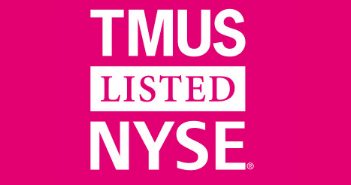Being the “Un-carrier” in the eyes of consumers is apparently a successful, if not expensive proposition, as T-Mobile US continues to realize.
During the recently completed first quarter, T-Mobile US was far and away the preferred destination for domestic wireless customers as the carrier added nearly 2.4 million new connections during the quarter, pushing its total customer base to just over 49 million connections. That growth came from across all of its operations and was more than four-times the 579,000 customers the carrier added during the first quarter of last year.
Breaking down those results showed that T-Mobile US added more than 1.3 million postpaid customers – or those signing up for its “no-contract” Simple Choice plans that have a contract tied to monthly device payments – compared with a loss of 199,000 postpaid customers last year; a gain of 465,000 prepaid customers, which was more than double the 202,000 prepaid customer additions last year; and 603,000 net wholesale customers through its machine-to-machine and mobile virtual network operator services, which just surpassed the 576,000 net wholesale customers added last year.
From a competitive standpoint, T-Mobile US far out-attracted its larger rivals by adding more than double the new customers of those carriers combined.
Helping to boost customer growth was a significant dip in churn, which dropped from 1.9% to 1.5% on the postpaid side and from 7% to 4.3% on the prepaid side. Both of those results were T-Mobile US’ lowest recorded churn numbers over the past year. In addition, T-Mobile US claimed a $136% year-over-year increase in gross customer additions, highlighting consumer attraction to the carrier’s offerings.
However, the cost of all that growth was apparent in T-Mobile US’ financial results, with net income plunging from a gain of $107 million during the first quarter of last year to a loss of $151 million this year. That was also the fourth straight quarter in which T-Mobile US posted a net loss.
The most recent net loss came from a significant increase in operating expenses, which were just enough to offset strong revenue growth. Total revenues increased 47% year-over-year to $6.875 billion, boosted by a 44% larger customer base and the inclusion of revenues from its acquisition of MetroPCS, which closed during the second quarter of last year. Pulling out the MetroPCS numbers resulted in a more modest 15.3% increase in revenues.
However, traditional postpaid average revenue per user dropped $4.06 year-over-year to $50.01 as consumers continued to flock to the carrier’s lower-priced Simple Choice rate plans. T-Mobile US noted that 75% of its postpaid customer base was on a Simple Choice plan at the end of the first quarter. But, when factoring in the monthly installment price consumers were paying for the mobile device connected with those plans, recurring revenues had increased $2.26 year-over-year to $59.54 per month. On the prepaid side, ARPU increased $7.84 year-over-year to $36.09.
Adjusted earnings before interest, taxes, depreciation and amortization dropped slightly year-over-year to $1.088 billion during the first quarter of this year.
Most of T-Mobile US’ increased operating expenses came from its cost of equipment sales, while capital expenditures, which are typically tied to network costs, were actually down slightly year-over-year to $947 million. T-Mobile US earlier this year also rolled out an incentive to provide up to $650 in credits per line to customers switching family plan lines from rival operators. The carrier noted that 21% of branded postpaid gross customer additions took advantage of that offer during the quarter.
Looking ahead, T-Mobile US said it expects to add between 2.8 million and 3.3 million total branded postpaid customers for the full year, indicating significantly slower growth from its red-hot first quarter. Full-year EBITDA is expected to come in between $5.6 billion and $5.8 billion, with capex reaching up to $4.6 billion for the year. Some of that capex spending is expected to come from T-Mobile US’ plans to integrate its recently acquired 700 MHz spectrum assets into its network operations, which should allow the carrier to increase capacity and coverage to some 158 million potential customers.
Bored? Why not follow me on Twitter

T-Mobile US posts industry leading Q1 customer growth, at a price
ABOUT AUTHOR
